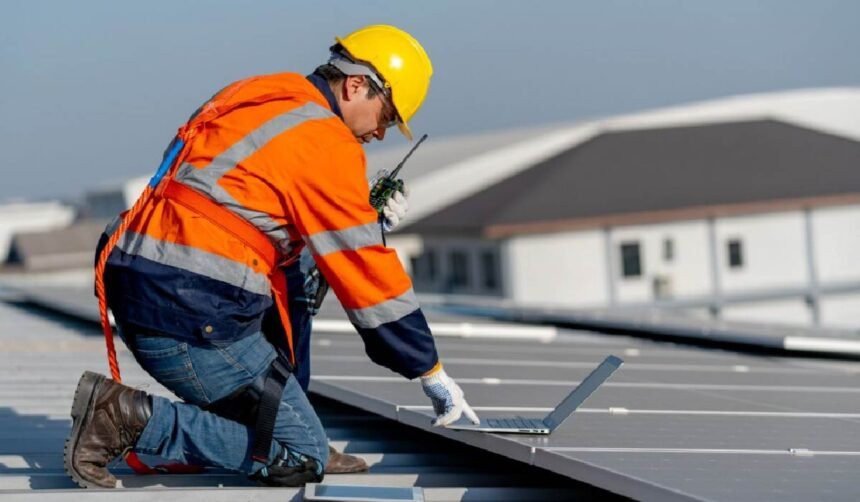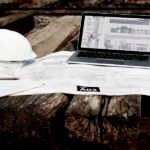Your roof stands as your home’s first line of defense against the elements, yet many homeowners overlook one of the most effective ways to maximize its lifespan: protective coating solutions. While traditional roof maintenance focuses on repairs and replacements, advanced coating technologies offer a proactive approach that can add decades to your roof’s service life while significantly reducing long-term costs.
Modern roof coatings have evolved far beyond simple paint applications. Today’s sophisticated formulations create seamless protective barriers that reflect harmful UV rays, resist moisture penetration, and provide superior durability against weather extremes. Whether you’re dealing with an aging commercial flat roof or looking to enhance your residential shingle system, the right coating solution can transform your roof’s performance and longevity.
This comprehensive guide explores how coating solutions work, the various types available, their specific benefits, and the factors to consider when choosing the best option for your property. We’ll examine real-world applications, cost considerations, and maintenance requirements to help you make an informed decision about protecting one of your most valuable investments.
Understanding Roof Coating Technology
Roof coatings represent a sophisticated blend of chemistry and engineering designed to create a protective membrane over existing roofing materials. These liquid-applied systems cure to form a seamless, monolithic barrier that addresses many common causes of roof failure, including UV degradation, thermal cycling, and water infiltration.
The science behind modern coatings involves advanced polymer technologies that provide both flexibility and durability. Unlike traditional materials that can crack or separate over time, quality coatings maintain their integrity while accommodating the natural expansion and contraction of roofing substrates. This flexibility proves crucial in preventing the small failures that often lead to major roofing problems.
Professional-grade coatings also incorporate reflective pigments and additives that dramatically improve energy efficiency. By reflecting up to 90% of solar radiation, these coatings can reduce roof surface temperatures by 50-80 degrees Fahrenheit, significantly extending the life of underlying materials while reducing cooling costs by 10-30% annually.
The application process involves thorough surface preparation, primer application when necessary, and multiple coating layers applied according to manufacturer specifications. When properly installed by experienced professionals like those at Pickle Roofing Solutions, these systems can provide 10-20 years of enhanced protection with minimal maintenance requirements.
Types of Roof Coating Solutions
Acrylic Coatings
Acrylic-based systems offer excellent UV resistance and reflectivity at a competitive price point. These water-based coatings provide good durability for most climates and work well on various substrates including metal, modified bitumen, and single-ply membranes. Acrylic coatings typically last 10-15 years and offer the advantage of easy recoating when renewal becomes necessary.
Silicone Coatings
Silicone formulations excel in ponding water situations and provide superior weathering characteristics. These coatings maintain their flexibility and adhesion even after years of exposure to extreme weather conditions. Silicone systems resist dirt pickup better than other options and offer exceptional resistance to UV degradation, making them ideal for areas with intense sun exposure.
Polyurethane Coatings
Available in both aliphatic and aromatic formulations, polyurethane coatings provide exceptional durability and impact resistance. These systems work particularly well in high-traffic areas or locations subject to hail damage. While typically more expensive than acrylic options, polyurethane coatings often justify their cost through extended service life and superior performance characteristics.
Butyl Rubber Coatings
Specialty butyl rubber formulations offer excellent adhesion to difficult substrates and provide outstanding flexibility in extreme temperature conditions. These coatings perform well in areas with significant thermal cycling and offer good resistance to ponding water and chemical exposure.
Key Benefits of Roof Coating Applications
Energy efficiency improvements represent one of the most immediate benefits of quality roof coatings. Cool roof coatings can reduce annual energy costs by 10-30% while simultaneously extending equipment life by reducing HVAC system strain. These energy savings often offset coating costs within 3-5 years, making them an excellent long-term investment.
Waterproofing capabilities of modern coatings address one of the primary causes of premature roof failure. By creating a seamless membrane that eliminates potential leak points, coatings provide superior water resistance compared to traditional repair methods. This protection proves especially valuable for flat or low-slope roofs where water infiltration commonly occurs.
The ability to restore aging roof systems without complete replacement offers substantial cost savings. A properly applied coating system can add 10-20 years to an existing roof’s life at a fraction of replacement cost. This approach allows property owners to defer major capital expenditures while maintaining reliable protection.
Environmental benefits include reduced waste generation and lower carbon footprint compared to roof replacement. Coating existing systems eliminates disposal concerns while requiring significantly less energy and materials than manufacturing new roofing components. Many coating formulations also contain recycled content and emit low levels of volatile organic compounds.
Real-World Performance and Case Studies
A recent project involving a 50,000 square foot commercial facility demonstrates the effectiveness of modern coating solutions. The building’s 15-year-old EPDM roof showed signs of aging but remained structurally sound. Rather than replacing the entire system at a cost exceeding $200,000, Pickle Roofing Solutions applied a silicone coating system for approximately $75,000.
Three years post-application, the coated roof shows no signs of degradation and has reduced the building’s cooling costs by 22% annually. The facility manager reports complete satisfaction with the system’s performance and plans to recoat in 10-12 years rather than replace the underlying membrane.
Industrial applications have shown even more dramatic results. A manufacturing facility with multiple low-slope roofs totaling 200,000 square feet was experiencing frequent leaks that disrupted production. A comprehensive coating program eliminated leak issues while reducing energy costs by $40,000 annually. The project paid for itself within four years through energy savings alone.
Residential applications, while smaller in scale, provide similar benefits. Homeowners applying reflective coatings to metal or tile roofs typically report 15-25% reductions in cooling costs and significantly improved comfort levels during peak summer months. These benefits become particularly pronounced in hot climates where roof temperatures can exceed 160 degrees Fahrenheit.
Statistical data from industry studies indicates that properly maintained coating systems achieve their projected 15-20 year service life in over 85% of applications. Failures typically result from inadequate surface preparation or application errors rather than coating performance issues.
Factors to Consider When Choosing Coating Solutions
Climate conditions significantly influence coating selection and performance expectations. Areas with frequent freeze-thaw cycles require coatings with superior flexibility and thermal stability. High-humidity environments benefit from formulations with enhanced mildew and algae resistance. Desert climates demand maximum UV protection and reflectivity to combat intense solar radiation.
Substrate compatibility represents another critical consideration. Different roofing materials require specific primer systems and coating formulations to achieve optimal adhesion and performance. Metal roofs may need specialized primers to prevent corrosion, while modified bitumen systems require coatings compatible with asphalt-based materials.
Building use and traffic patterns affect coating selection. High-traffic areas benefit from more durable formulations like polyurethane systems, while low-traffic roofs can utilize cost-effective acrylic options. Buildings housing sensitive operations may require low-odor formulations applied during specific weather windows.
Budget considerations extend beyond initial application costs to include long-term maintenance and recoating expenses. While premium systems cost more initially, they often provide better value through extended service life and reduced maintenance requirements. Professional evaluation helps determine the most cost-effective solution for specific applications.
Warranty requirements and manufacturer support influence long-term satisfaction with coating systems. Reputable manufacturers provide comprehensive technical support, application training, and warranty programs that protect the investment. Working with certified applicators ensures proper installation and warranty compliance.
Application Process and Professional Installation
Surface preparation represents the most critical phase of coating application, often determining system success or failure. This process involves thorough cleaning to remove dirt, grease, and loose materials, followed by repairs to damaged areas and primer application where necessary. Inadequate preparation leads to adhesion failures and premature coating deterioration.
Weather conditions during application significantly impact coating performance and curing characteristics. Most systems require temperatures between 50-90 degrees Fahrenheit with low humidity and no precipitation for 24-48 hours after application. Professional contractors monitor weather forecasts carefully and may delay projects to ensure optimal curing conditions.
Application techniques vary by coating type and substrate but generally involve multiple thin coats rather than single thick applications. Spray application provides the most uniform coverage and fastest installation, while roller or brush methods offer better control in detailed areas. Proper film thickness measurement ensures adequate protection while avoiding waste.
Quality control measures throughout the application process include adhesion testing, thickness verification, and visual inspection for defects. Experienced contractors like those specializing in roof maintenance and extensions understand the importance of thorough documentation and follow-up inspections to ensure long-term performance.
Professional installation provides several advantages over DIY approaches, including proper material selection, surface preparation expertise, application technique knowledge, and warranty protection. The specialized equipment and experience required for quality coating application typically justify professional installation costs through improved performance and longevity.
Maintenance and Long-Term Care
Regular inspection schedules help maximize coating system lifespan and identify potential issues before they become major problems. Semi-annual inspections should focus on drainage areas, seams, penetrations, and high-traffic zones where wear typically occurs first. Early detection of minor issues allows for simple repairs that prevent system-wide failures.
Cleaning protocols vary by coating type but generally involve gentle washing with mild detergents to remove accumulated dirt and debris. Avoiding harsh chemicals and abrasive cleaning methods preserves coating integrity and reflective properties. Some formulations benefit from periodic treatments that restore reflectivity and extend service life.
Minor repairs using compatible materials can address localized damage without compromising the entire system. Small punctures, worn areas, or minor separations respond well to patch repairs when performed promptly. Delaying repairs allows water infiltration that can cause substrate damage and require more extensive restoration.
Preventive maintenance programs offer the best value for coating system care. These programs typically include annual inspections, cleaning as needed, minor repairs, and documentation of system condition. Professional maintenance providers understand coating characteristics and can recommend appropriate care procedures for specific formulations.
Documentation of maintenance activities, repairs, and system condition supports warranty claims and helps plan for future recoating needs. Proper records also demonstrate due diligence in system care and can support insurance claims if damage occurs from covered events.
Common issues that may compromise coating performance include algae growth and wind damage to underlying substrates, both of which require prompt attention to prevent system failure.
Frequently Asked Questions
How long do roof coatings typically last before requiring renewal?
Most quality roof coatings provide 10-20 years of effective protection depending on the specific formulation, application quality, climate conditions, and maintenance practices. Acrylic systems typically last 10-15 years, while premium silicone and polyurethane formulations often achieve 15-20 year service lives. Regular maintenance and proper care can extend these timeframes, while harsh climates or inadequate maintenance may reduce longevity. Many coating systems can be renewed with additional coats rather than complete removal and replacement.
Can roof coatings be applied over any type of existing roofing material?
While roof coatings work well over many substrates, compatibility varies by coating type and existing roof material. Most coatings adhere well to metal, modified bitumen, single-ply membranes, concrete, and properly prepared built-up roofing systems. However, certain substrates may require special primers or surface treatments to achieve optimal adhesion. Incompatible materials like silicone membranes may not accept standard coatings without specialized preparation. Professional evaluation determines the best approach for specific substrate conditions.
What cost savings can property owners expect from roof coating applications?
Roof coatings typically cost 30-60% less than complete roof replacement while providing similar protection and performance benefits. Energy savings from reflective coatings often range from 10-30% of cooling costs, with payback periods of 3-7 years depending on local energy rates and climate conditions. Deferred replacement costs represent the largest savings, allowing property owners to extend roof life 10-20 years at a fraction of replacement cost. Total lifecycle savings often exceed 50% compared to traditional replacement approaches.
Do roof coatings require special maintenance procedures or professional servicing?
Roof coatings require minimal maintenance compared to traditional roofing systems, but some care ensures optimal performance and longevity. Semi-annual inspections help identify minor issues before they become major problems, while periodic cleaning maintains reflective properties and appearance. Most property owners can perform basic maintenance tasks, though professional inspection and repair services provide the best results. Preventive maintenance programs typically cost less than traditional roof maintenance while providing superior protection and documentation.
How do weather conditions affect coating application and performance?
Weather significantly impacts both coating application success and long-term performance characteristics. Application requires temperatures between 50-90 degrees Fahrenheit with low humidity and no precipitation for 24-48 hours after installation. Extreme climates affect coating selection, with flexible formulations needed for freeze-thaw cycles and maximum UV protection required for desert environments. Quality coatings perform well in all climates when properly selected and applied, but weather conditions during installation critically determine success.
Why Roof Coatings Are a Smart Long-Term Investment
Roof coating solutions represent one of the most cost-effective ways to extend your roof’s lifespan while improving energy efficiency and reducing long-term maintenance costs. With proper selection, professional application, and routine maintenance, these advanced systems can add 10-20 years to your existing roof while providing superior protection against weather extremes, UV damage, and water infiltration. The combination of immediate energy savings, deferred replacement costs, and environmental benefits makes roof coatings an intelligent investment for both residential and commercial properties. Don’t wait until major roof problems develop – explore how coating solutions can protect and enhance your roofing investment today.
About Pickle Roofing Solutions
Pickle Roofing Solutions specializes in comprehensive roofing services with over 15 years of experience serving residential and commercial clients throughout the region. We provide expert roof coating applications, maintenance programs, leak repair, and complete roofing system installations including shingle replacement, metal roofing, and flat roof systems. Our team of certified roofing professionals combines technical expertise with industry knowledge to deliver long-lasting solutions that maximize roof performance and lifespan.
We pride ourselves on using premium materials, advanced application techniques, and thorough quality control measures that ensure superior results for every project. Our comprehensive approach includes detailed roof assessments, customized coating recommendations, professional installation, and ongoing maintenance support. We have helped hundreds of property owners achieve significant energy savings, extend roof life, and reduce long-term roofing costs through strategic coating applications and preventive maintenance programs.
Contact our team today to discuss how our roofing expertise can help you maximize your roof’s lifespan and performance. Schedule a consultation to learn more about our coating services and how we’ve helped clients achieve 15-25% energy savings while adding decades to their roof’s service life.
| Business Name: | Pickle Roofing Solutions |
| Address: | 1333 W McDermott Dr # 200, Allen, TX 75013 |
| Phone number: | (469) 247-8310 |







